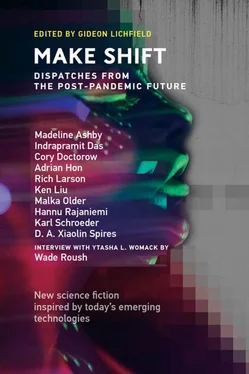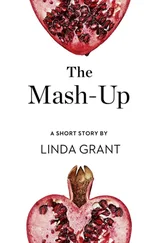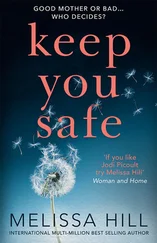“What’s dynamic distancing?” Cindy asked, messaging through her glasses.
I sent her a video I’d unearthed. The idea was that you could reduce the safe distancing requirements for respiratory diseases to a fraction of the usual two meters by predicting the exact movements of respiratory droplets that might carry the H1N3 virus. We were already using a crude form in the marquee by accounting for wind, but true dynamic distancing would allow people to get within centimeters of each other—especially if it adjusted for masks and face shields, speech patterns, sneezes, and everything and anything else that could affect droplet spread. The concept had been floating around ever since COVID-19, more as a thought experiment than a practical technique. The sensors weren’t good enough back then, and even now, the computational requirements were scarily expensive.
As Chan described the technical details, my mind wandered. I didn’t need glasses to imagine how she could fill the marquee. Dynamic distancing coupled with augmented reality would let us route audience members right next to each other. There’d be no flashing alerts or social distancing walls—if one person ventured too near another, the performance they were watching could adapt to pull their attention and control their movements, but otherwise they’d have the freedom to walk wherever they liked. The new protocol promised a lockdown experience like no other.
“Other teams will use the same old social distancing protocols that make it feel like you’re queuing at a theme park,” said Chan, summing up. “But here, you won’t have to. Here, our artists won’t have to compromise. Here, it will be as if there were no virus.”
“The audience won’t forget that,” Tricia added. “We talk about how the Hong Kong diaspora needs soft power to survive. This is what we’re talking about.”
Fierce nods and proud smiles all around. I raised my hand gingerly. Tricia frowned at me, her glasses no doubt itemizing my insignificance. “Um, as I understand it, the computational expense required for dynamic distancing rises exponentially with every additional agent. At least, that’s what Disney’s research group found.”
Chan nodded briskly. “I’ve read Mathy’s paper. It’s good. But there’s a way to scale the expense linearly. You can simplify the problem using moving cells, so you don’t need to model the particulate spread across the entire space. It only works in smaller controlled environments like this one, which is why it doesn’t work in a theme park. It’s not impossible, but it’s very, very hard.”
“We can do ‘very, very hard,’” said Tricia.
“I’m told China is sponsoring a venue,” said Chen Xi, the elderly living sculpture artist. “Ours will be better.”
CINDY JUMPED BACKWARD AS BOULDERS ABRUPTLY TUMBLED DOWN THE ESCARPMENTtoward her, almost losing her balance. “Whoa!” she laughed, taking off her glasses.
“You don’t think it’s too sudden?” I asked.
“I thought that was the point?”
I sighed. To make dynamic distancing work, we needed the ability to trigger the audience to move at a moment’s notice, but not at the risk of injury. Cindy flopped onto the marquee floor, grinning. One of the logistics volunteers looked down from his ladder and shook his head in mock disgust. They’d been working for days on end painstakingly stitching AR localizers and laser arrays into the ceiling, and Cindy had gotten the day off to help me test the system. I was glad she was enjoying herself, but I’d already logged a dozen bugs and was dreading what the afternoon would bring.
As amazing as Chan’s technology was, wrangling the artists’ work into a format that would play nicely with it was proving almost impossible. Half hadn’t worked in AR before and the other half didn’t welcome being dictated to by me, a mere technician whose mysterious elevation they’d witnessed just a month ago. Barely a day after I’d questioned Chan’s approach, she’d taken me aside, peppered me with probing questions on my games programming experience, and unceremoniously announced my promotion to “Technical Liaison” between the artists and her tech team.
I was exhausted. My throat ached from explaining why they needed to design triggers that the dynamic distancing protocol could invoke to move audiences around, and my head ached from doing this as diplomatically as I could manage.
“Your land sculpture is sensational, it’s so evocative of the chaotic climate that our old and new homes share,” I’d said to an impassive Chen Xi. “I realize it’s inconvenient to add trigger elements for the marquee, but I think they could complement or even enhance your work.”
“What would you suggest?” he asked.
“We could add weather effects. Rain clouds and thunderstorms could steer people along a path.”
He nodded. “My granddaughter told me about such a thing she’d seen in Hong Kong. She enjoyed it greatly.” I smiled encouragingly. “It was at Disneyland.”
“Well… that’s just one example. We could try something else. Perhaps a wave of—”
“I understand what you need,” he said. “You need to move people. Leave it with me.”
The escarpment with its falling boulders was what Xi’s team sent. On first glance, it was perfect, an organic part of his land sculpture, its programming fully synced with Chan’s dynamic distancing protocol.
But it was all too dramatic. After a few of these surprises, the audience would figure out how they were being herded between artworks. Doug Yau’s standup set had Cindy and me in stitches but the dynamic distancing trigger was literally him yelling at us to get out. Not the most subtle of transitions.
As I tweaked the parameters on the escarpment and ran Cindy through another simulated AR crowd, Chan’s avatar appeared. “These things you’re filing aren’t blockers for opening,” she said.
Despite having worked with Chan for a month now, her interruptions still flustered me. “I understand that, but Xi’s team don’t understand how triggers are meant to—”
“Fine. Harden the barrier around Xi for now. You need to start testing the other artists.” Her avatar blinked away before I could even nod. When we couldn’t figure out how to smoothly move audiences from one area to another, we’d resorted to creating virtual barriers around artists. It was a hack that eliminated agency, but it was better than having no art at all. When the barriers were turned on, we’d give people a tasteful but unmistakable AR icon to move on every few minutes rather than expecting them to follow a confusing AR butterfly from Angela Cheng’s play.
I pulled Cindy up from the floor and led her to Anna Hui’s area. I hadn’t spotted her at our team meetings, but her short festival bio said she’d performed in the Hong Kong Ballet for a few years, after which she started her own private artistic practice. Cindy slipped on her glasses, joining me back in the marquee’s AR testing layer. Two motionless wireframe humans appeared next to the two of us.
“Is this it?” said Cindy.
I swiped through the testing interface to see if I’d missed a startup command. “It’s meant to launch automatically. I guess Anna forgot to set that flag,” I said.
“Look!” Cindy pointed at the wireframe next to me, which was mimicking my swipes. Her own wireframe raised its arm toward me a second later.
We waved our arms and shuffled about, watching the wireframes as they followed us. They weren’t echoing our movements perfectly—that would be boring, I realised. I started walking around, trying to figure out the trick. My wireframe kept up, drifting ever closer until it settled over me like a second skin.
As I paused, the wireframe subtly pulled from me, its mesh drifting a few centimeters away from my right side. I unconsciously followed it, not precisely—I wasn’t a dancer—and caught myself. Did I really want to be a puppet? I stopped, and it stopped with me. I slowly pivoted on my left foot, an inelegant turn, and the mesh came with me, but in a cleaner swoop with a graceful follow-through. I was in control.
Читать дальше












